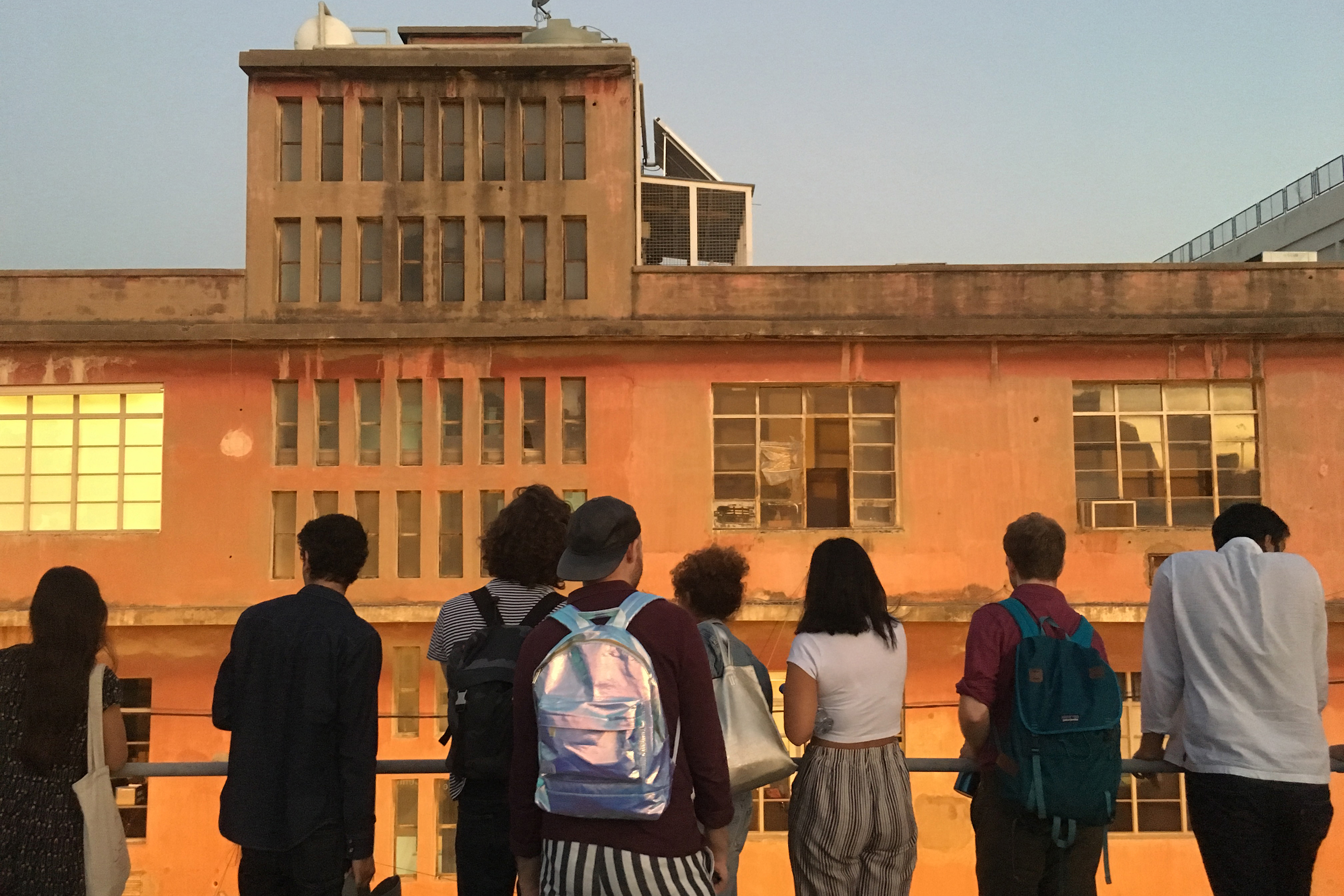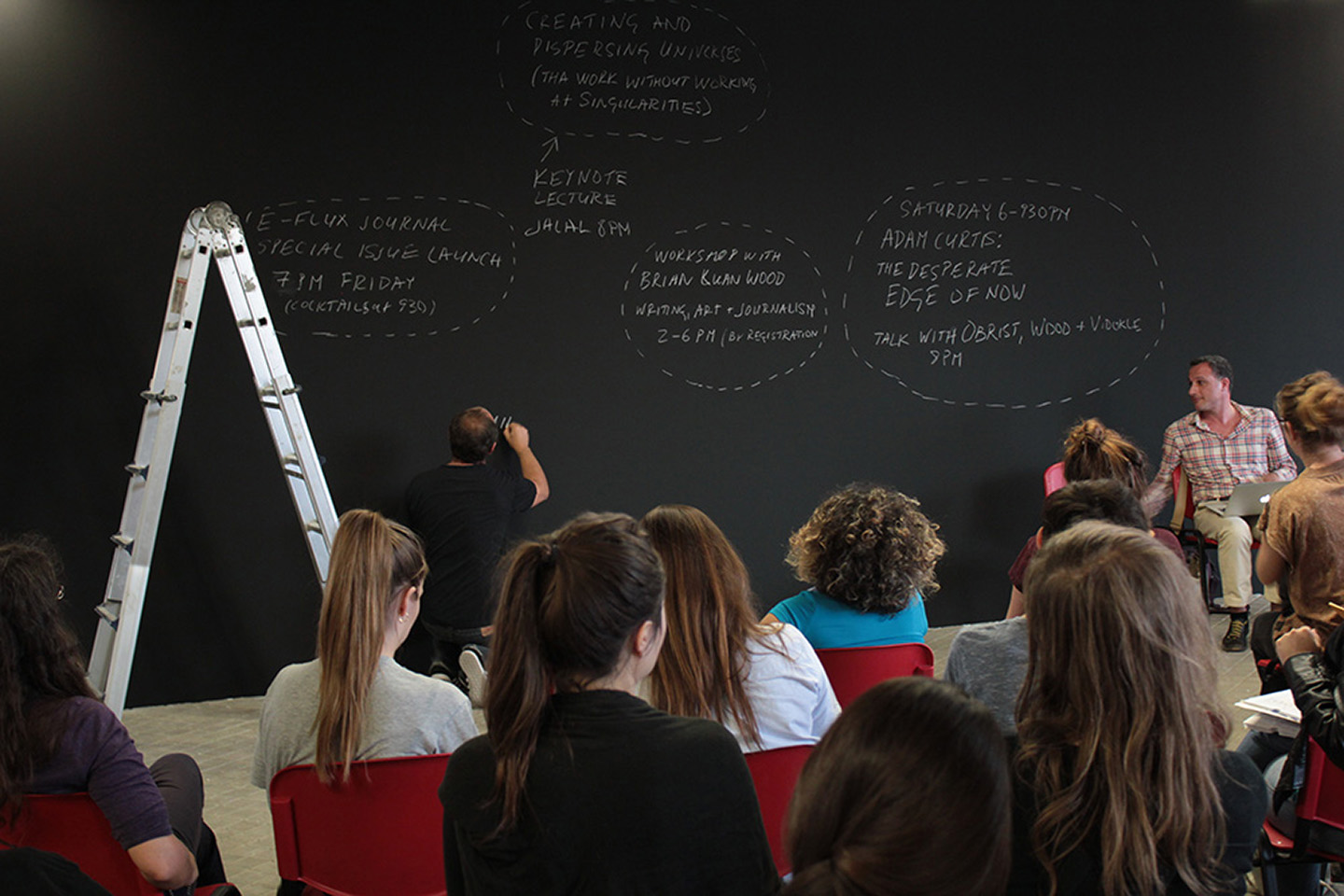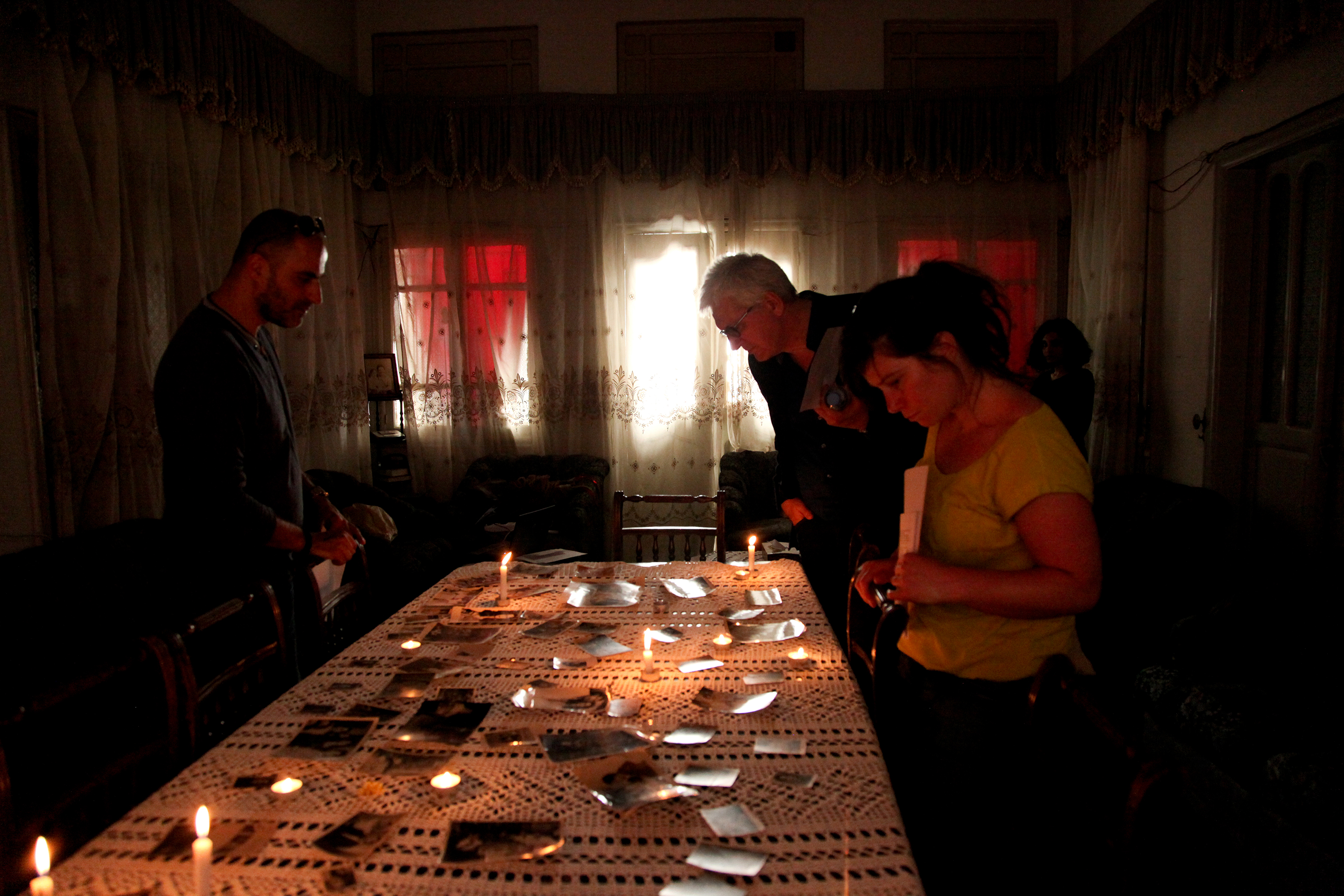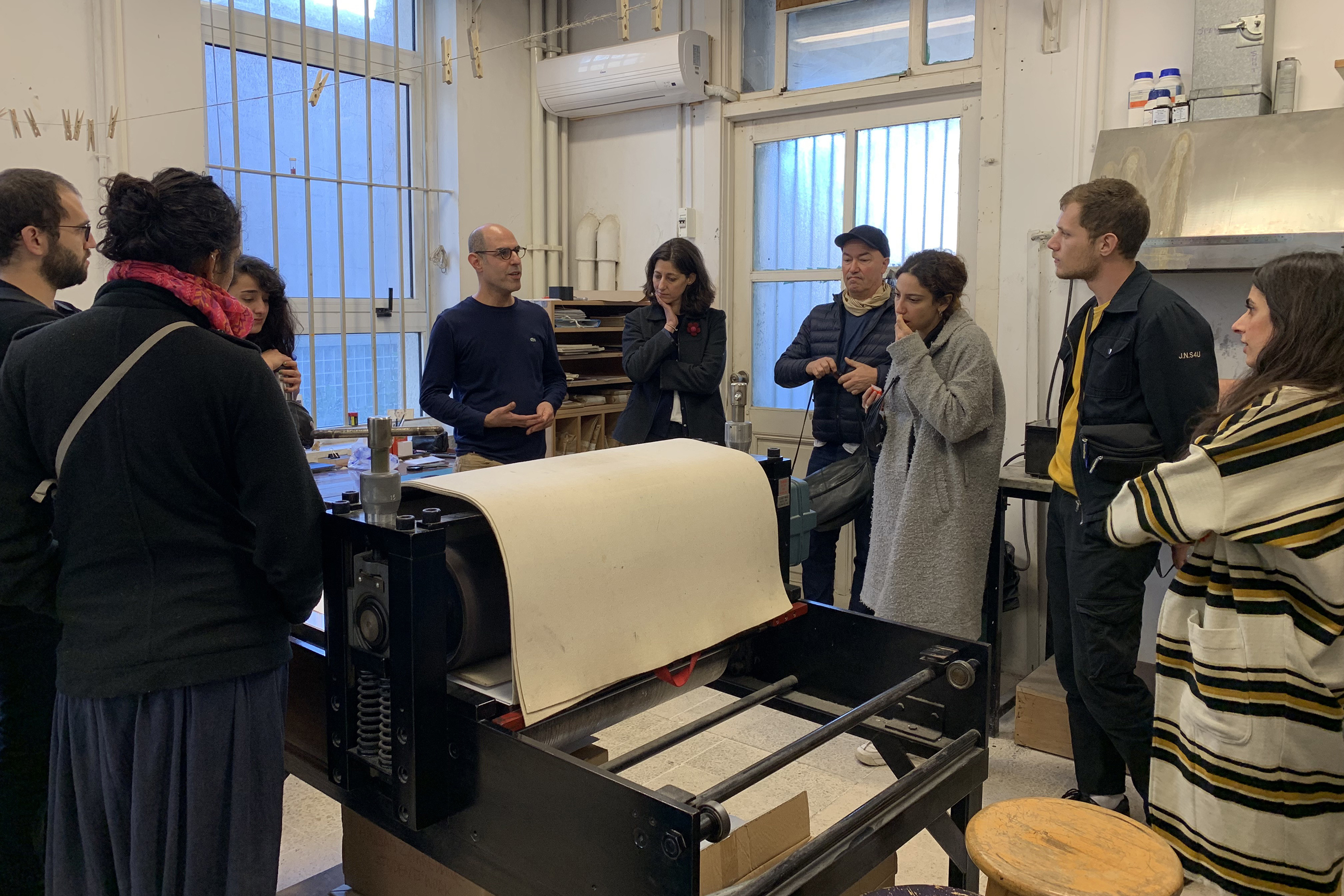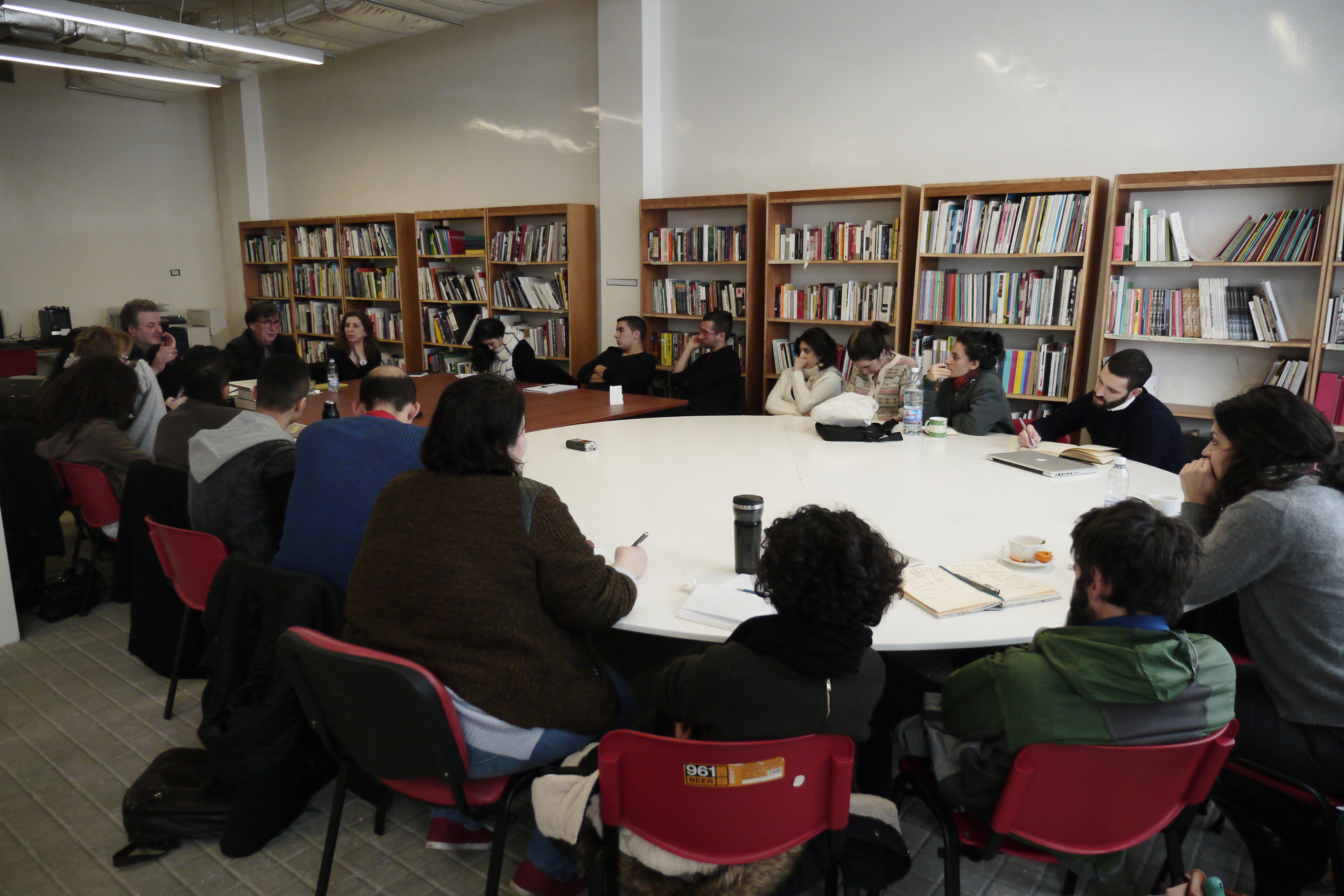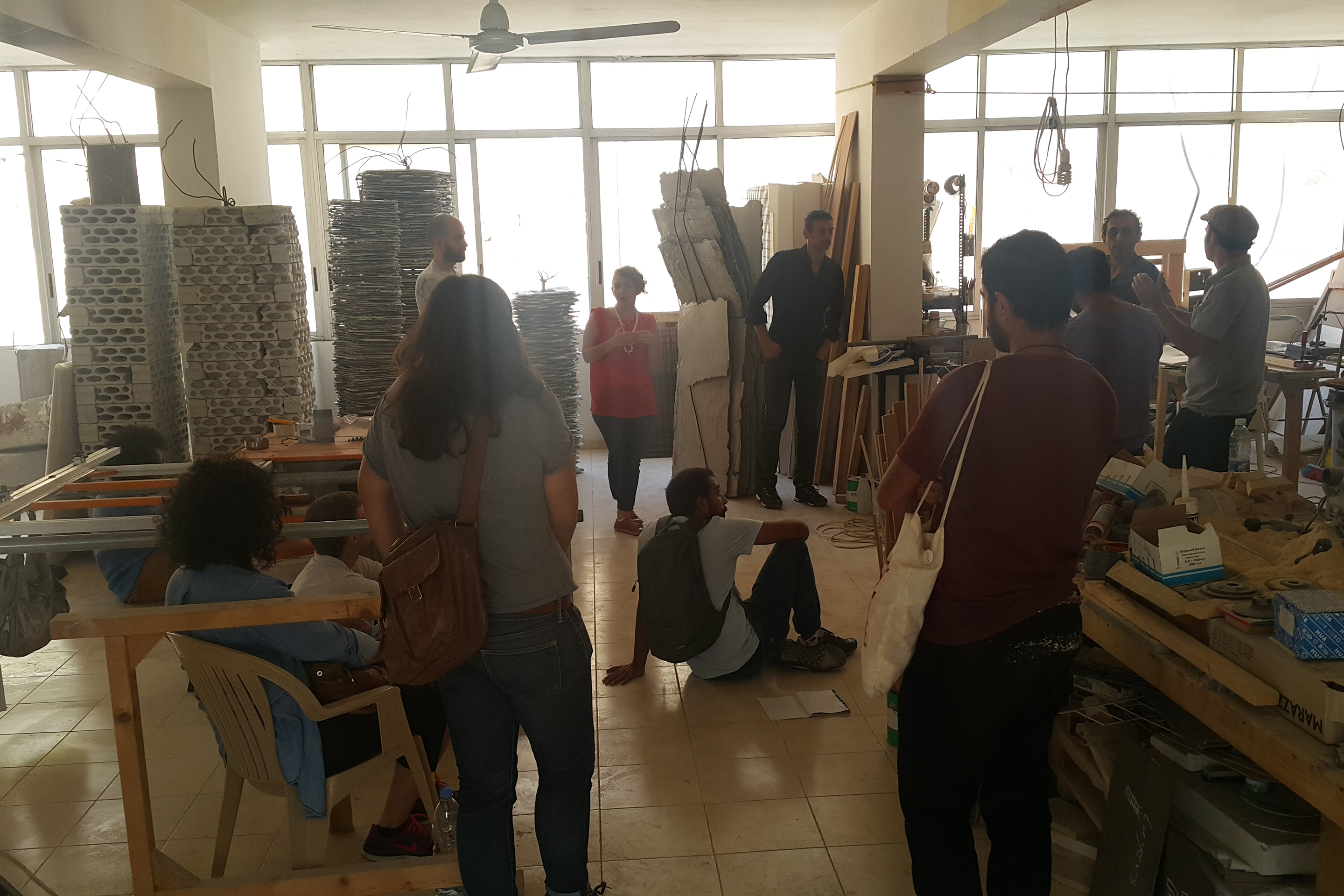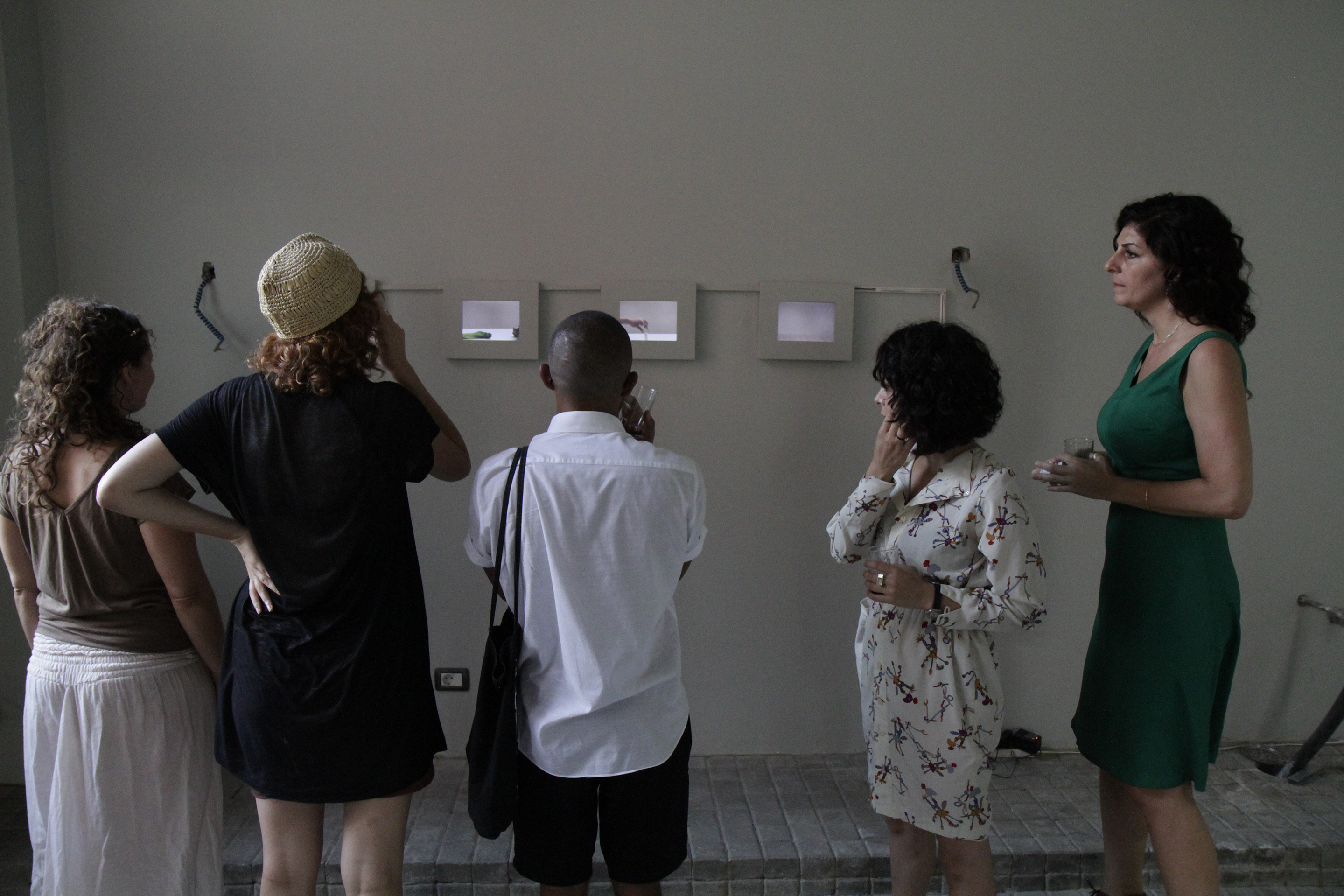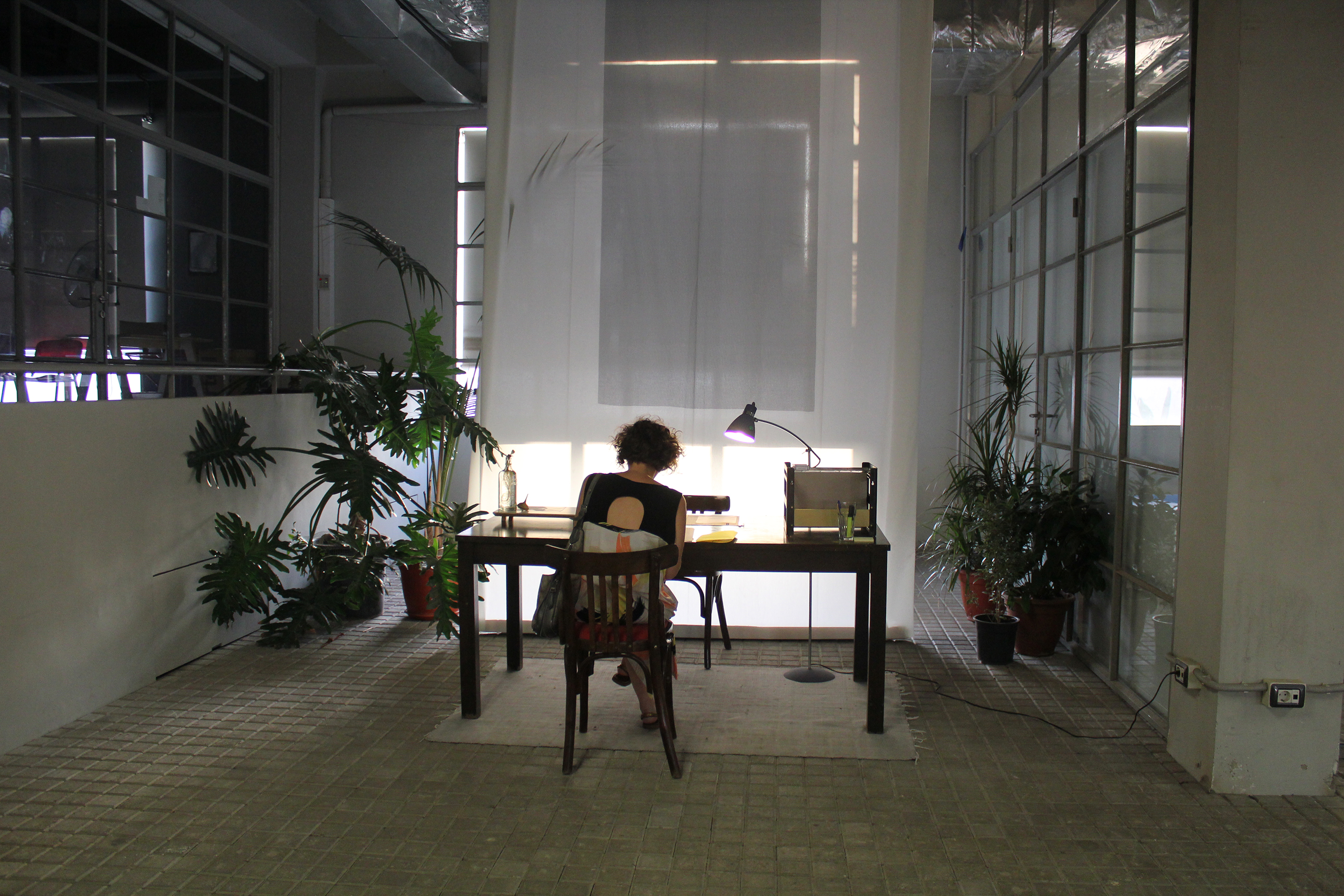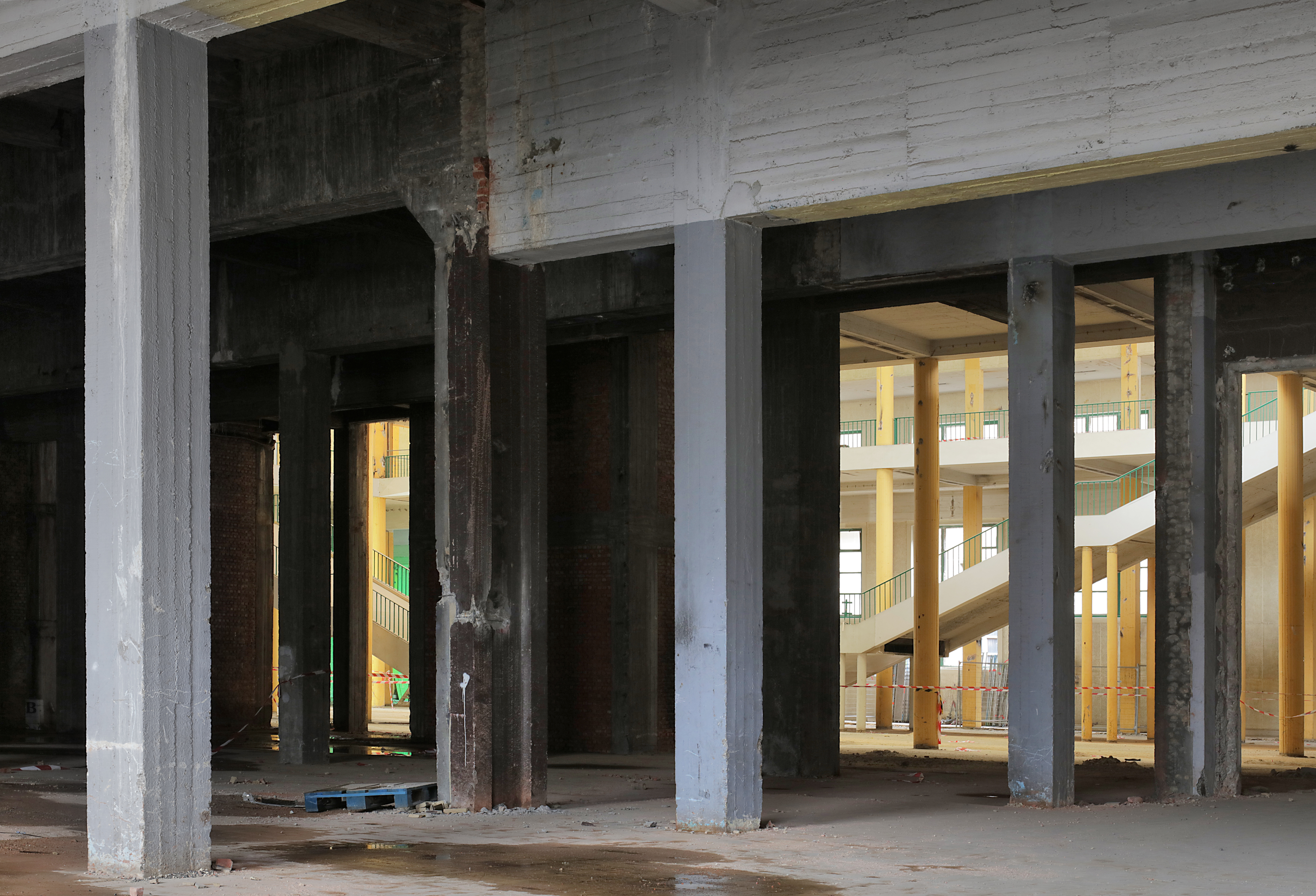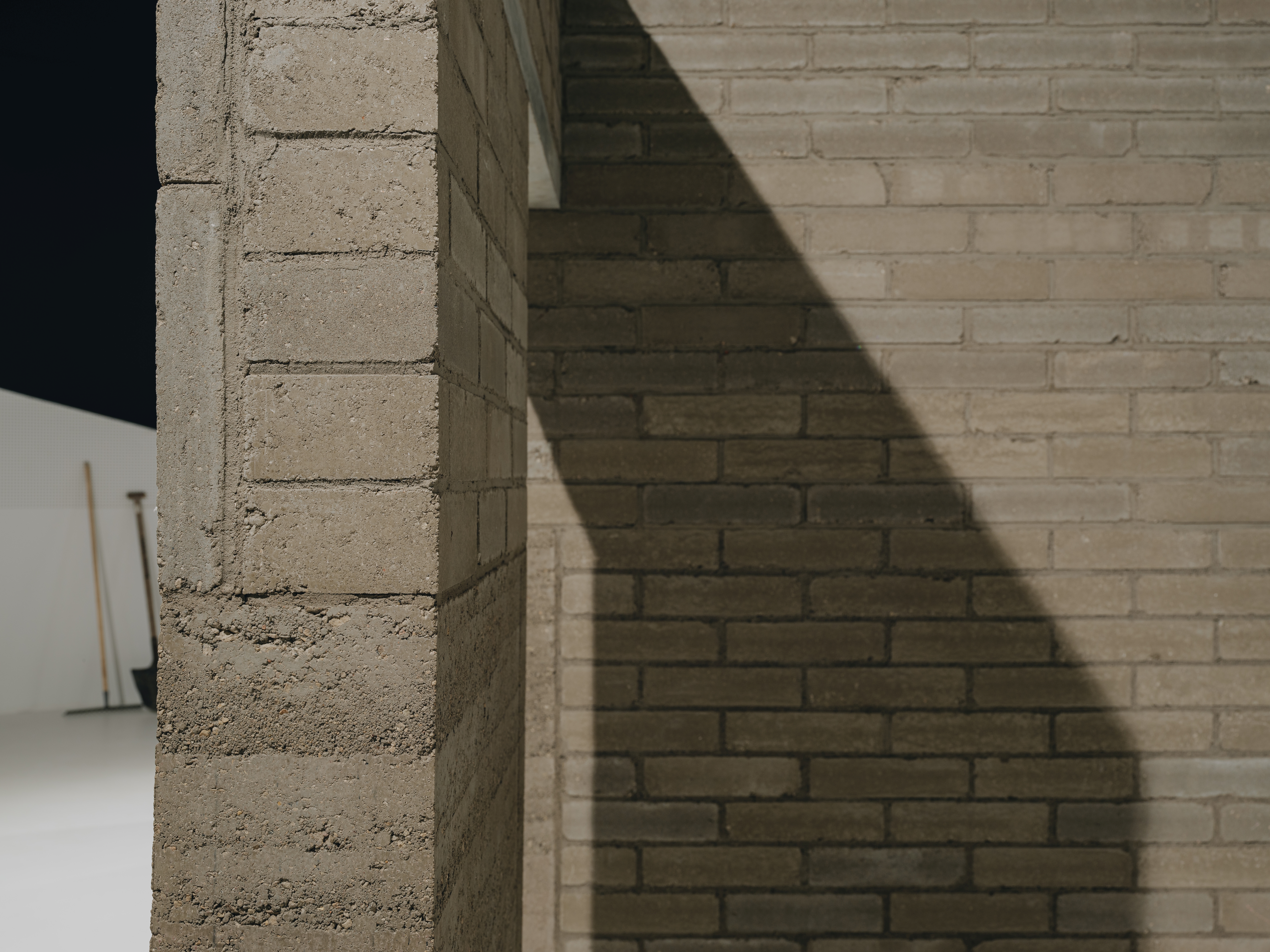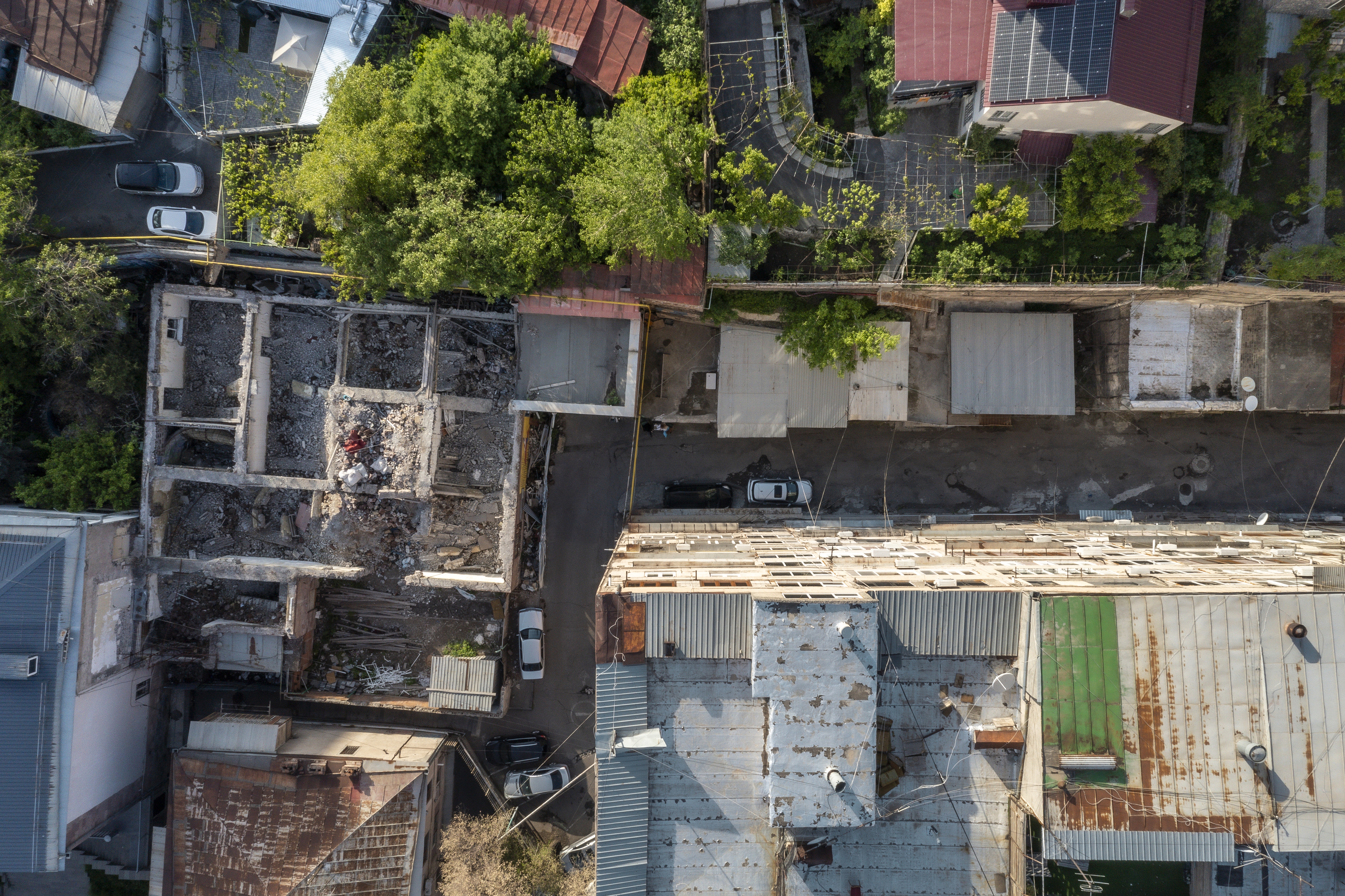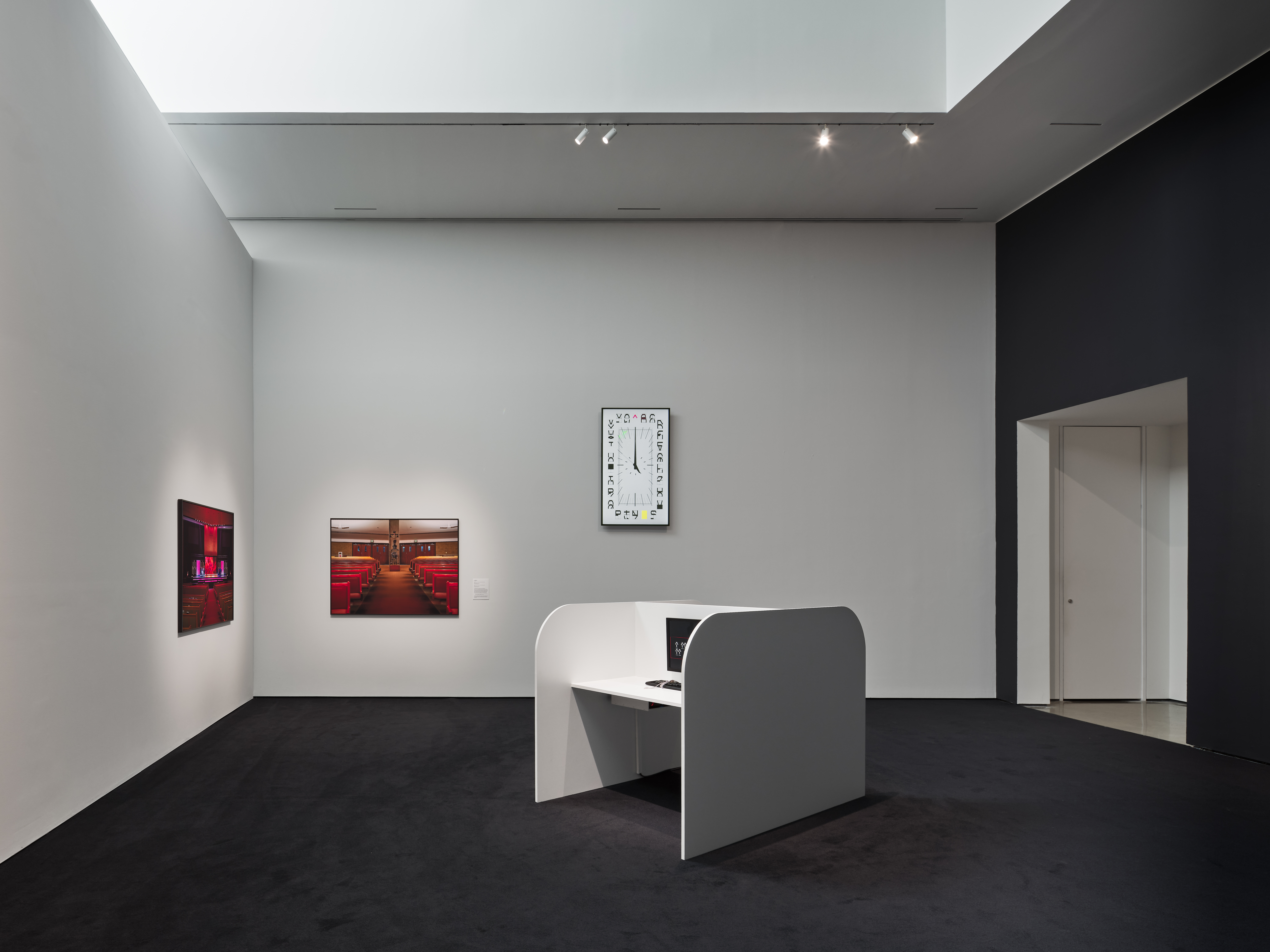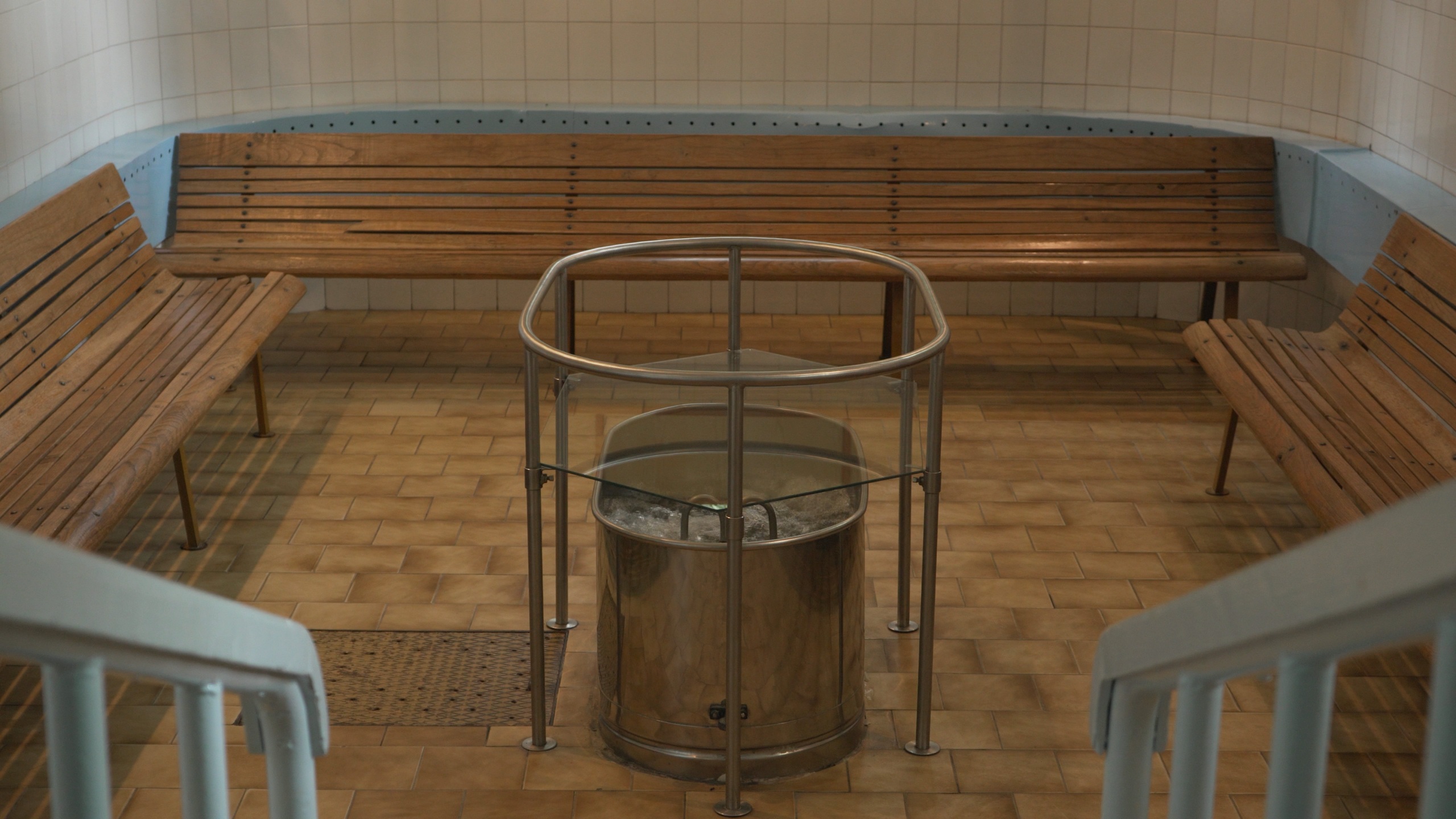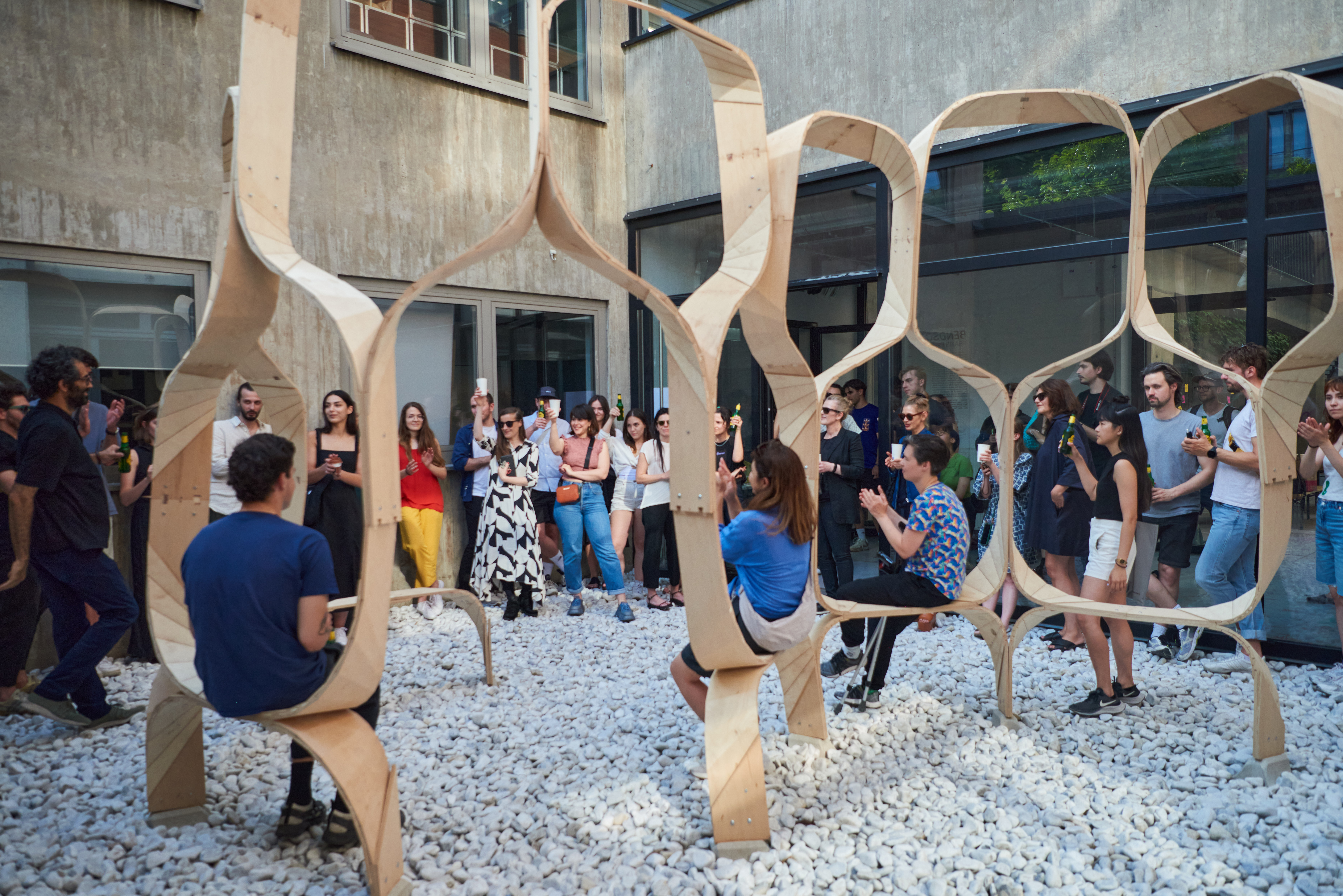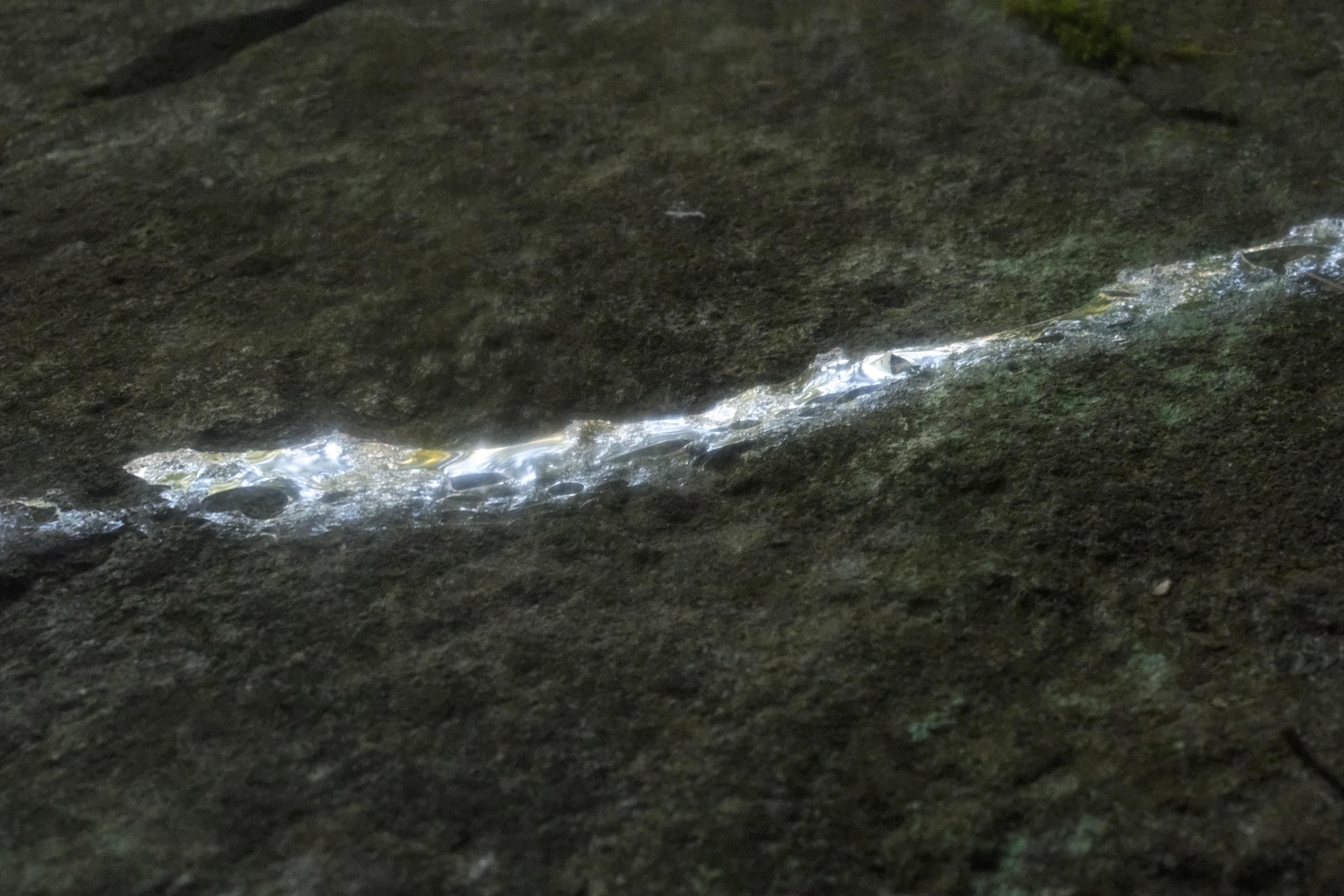https://ashkalalwan.org/program.php?category=3
How might an experimental program evolve without replicating what it was designed to circumvent? In a conversation with Sam Thorne about the origins and workings of the Home Workspace Program (HWP), Christine Tohmé, director of host institution Ashkal Alwan, directly addresses what she intended the program to avoid:
The stultifying frameworks, the same old codes of what you need to learn or unlearn, and the set way of doing things in a chronological way. Rather, I see the history of art as a dispersed, volatile structure that can start or happen anywhere. That’s what Home Workspace Program is about. [footnote Christine Tohmé, “Your City,” in School: A Recent History of Self-Organized Art Education, ed. Sam Thorne (Sternberg Press, 2017), 291.]
Tohmé teases, briefly, a set of generative claims and issues about the program. First, there is the comparison with and antagonism toward the “academic,” a common tactic of distinction drawn by independent art programs in relation to their academic counterparts. This difference can resemble a straw-man argument: the purportedly open and interdisciplinary art study program versus methodologically repressive academe. Then, the process of acquiring and overturning knowledge and skill—“learning” and “unlearning”—which echoes debates in art and architecture education on “learning from,” as well as the resurgence of “skilling” and “deskilling” in artistic circles over the last decade. Then the subject of “structure,” highlighted in Tohmé’s comments on chronology, fixity, and mobility, and centralization and dispersion. Most thought-provoking of all terms invoked, however, is “the history of art.” How does HWP, and its configurations of modes of knowledge, method, and structure, comment on and contribute to the production of art and the writing of its history? Moreover, how can an interdisciplinary arts program with an ever-changing structure strike a balance between a responsive flexibility and a debilitating volatility?
Any consideration of the pedagogical and institutional makeup of HWP cannot be separated from the specific position it occupies in the Lebanese educational landscape. Established in Beirut in 2011 by Ashkal Alwan, The Lebanese Association for Plastic Arts, itself founded in 1993, HWP offers a unique environment—indeed, the only such opportunity in the country—for sustained engagement with contemporary art theory and artistic production in a non- or para-academic setting. The application process is competitive: the program is tuition-free and provides the ten to fifteen selected international fellows with a modest monthly stipend and shared studio space during their ten months of participation.
The brochure for the end-of-year open studios of the inaugural 2011–12 edition noted that HWP “targets emerging artists who wish to develop their formal, historical and critical skills and practice in a supportive environment in Beirut.” [footnote All documentation of the Home Workspace Program, unless otherwise noted, is taken from Ashkal Alwan’s website: www.ashkalalwan.org. Course materials, such as readings circulated by visiting professors, were made personally accessible by the institution. I would like to thank Christine Tohmé, Lara Saab, and Edwin Nasr for generously sharing this material with me.] What counts as an “emerging artist,” is, of course, relative and constantly shifting. As Salwa Aleryani told Merve Ünsal—both fellows in the 2014–15 edition—the “emerging artist” is a geopolitical index of uneven distribution of capital. “There are countries with long histories who are emerging and who have larger populations, area, and resources than other non-emerging countries, so obviously, the term ‘emerging’ is quite flexible.” [footnote Merve Ünsal, “A glossary for arts education: On the Home Workspace Program 2014–2015,” m-est, May 16, 2016 →.] Consider the marker “emerging” and the pool of adjacent terms denoting generational and professional art expertise and exposure (e.g., “early career”) with that caveat in mind. In its early iterations, HWP adopted criteria for selecting “emerging” artists that proved both generative and unstable. Painters and sculptors who graduated from fine arts programs with little to no experience with critical theory, contemporary art theory, or philosophy were given the opportunity to participate alongside artists better versed in these fields. Though this created discomfort for fellows and professors alike because of the sense of a hierarchical distribution of knowledge, the situation both allowed for fruitful collaborations between practitioners with very different skill sets and broadened the educational and professional opportunities for both groups. Ashkal Alwan’s selecting of “emerging” practitioners produced a mix of early-career artists, curators, and writers and an environment in which ideas across disciplines were readily shared. However, naturally, challenges arose, especially when practitioners with backgrounds in writing- and research-based practice were advised to produce more visual or performative work.
Given that each edition of HWP differs from the last, perhaps the most productive analytic and methodological approach for addressing its structural and conceptual makeup is to examine how individual seminars and workshops from distinct editions shed light on questions of education, production, and professionalization. This allows for a comparative and synthetic reading of modules, texts, and experiments across editions.
In HWP’s 2016–17 edition, then-artistic director Ghalya Saadawi and the curricular committee [footnote he curricular committee for the 2016–17 edition was composed of Tony Chakar, Iman Issa, Joe Namy, Zeynep Oz, Walid Raad, and Natascha Sadr Haghighian. From the Ashkal Alwan website: “The Home Workspace Program Advisory Curriculum Committee consists of members whose artistic practices and pedagogical experience engage a diverse range of disciplines and media. The committee rotates every three years. Alongside the Program Coordinator, the Curriculum Committee develops the structural and thematic framework of the program, invites Visiting and Guest Professors, and participates in selecting each year’s admitted fellows”→.] established a series of interventions intended to address narratives of participation, canonization, and revisionism in modern and contemporary artistic practices in Lebanon. The curriculum unfolded across a “preface,” a “course” in four modules, and five “workshops,” with critique sessions interspersed and a concluding open studios event. The second course module, “Histories of the Artist,” comprised three seminars by Walid Sadek, Kristine Khouri, and Tirdad Zolghadr, each of which delved into the historical, institutional, and political construction of the modern and contemporary artist in its own way. Gathering fellows, artists, and writers around historical and theoretical reflections on power and agency within the arts, these seminars fashioned a temporary platform within an influential institution—Ashkal Alwan—in which processes of labor organization, professionalization, and institution-building were excavated and scrutinized.
Artist and writer Walid Sadek’s two-day seminar, “The Artist as Material History,” looked at “the impact of two disruptive, possibly eruptive, events in the lives and works of painter Moustafa Farroukh (1901–1957) and sculptor Youssef Howayek (1883–1962). Events that denuded them, albeit in dissimilar ways, of their artist-mantel and forcibly fed them into the pugmill of material history.” Sadek, whose texts and artworks theorize what he calls the “protracted now” of the Lebanese Civil War, did not call for a revisionist history that sought to integrate Farroukh and Howayek into an art world that has forgotten or actively sidelined them as emblems of a stubborn and out-of-touch European academicism. Instead, he invited the fifteen participating fellows to think with Farroukh’s biography as an illuminating work of self-mythologization. In his text “In Health but Mostly in Sickness: the autobiography of Moustafa Farroukh,” which circulated as suggested reading to the fifteen fellows in the seminar, Sadek argues that the painter’s “most important work is his autobiography”:
Simply stated, the problematic that is unearthed in Farroukh’s text is that an artist’s biography is a tale that ought to be composed of predictable events. That is, of events that neither dissuade the artist nor push him to digress from the set path mythically prefigured in the auguries that punctuate his childhood.
Inviting the fellows to do a close reading of passages from Farroukh’s Tariki ila-l-Fen (“My Path to Art”) (1986), Sadek diagnosed Farroukh’s predicament of “artist-as-civilizer” and his disdain for the European avant-garde, casting his autobiography as a unique historical and literary object. The artist biography, an increasingly common object of study in art-historical work in academic programs, was deployed by Sadek to construct a symptomatic reading and a poignant portrait of its subject. Rather than a mere chronology, “In Health but Mostly in Sickness” proposes a historical-materialist narrative not unlike Walter Benjamin’s “Eduard Fuchs: Collector and Historian,” a text Sadek also shared in seminar.
The provocations of writer and curator Tirdad Zolghadr scrutinized what he considered the unchecked, or at least the inadequately questioned, patterns of contemporary artists’ participation in narratives of professionalization, market dynamics, and artwork circulation. Moreover, his seminar shed light on historical continuities in discourses around “structure,” spanning fields from political activism to contemporary art theory. Sharing texts by Suhail Malik, codirector of the Master of Fine Art at Goldsmiths College, London, and Jo Freeman, feminist writer, activist, and lawyer, Zolghadr tackled the ever-controversial polemic of “exiting” contemporary art. Freeman’s text, “The Tyranny of Structurelessness,” first delivered as a speech at the Southern Female Rights Union conference in the United States in 1970, offers provocation for debating matters of organization, collective decision-making, access, and formality/informality. Keeping in mind the very different contexts of the 1970s United States and present-day Lebanon, and, more specifically, that Freeman’s text attends to organizational issues within feminist activist circles, “The Tyranny of Structurelessness” nevertheless provided insight into HWP’s persistent unfixity. “The rules of decision-making,” Freeman writes, “must be open and available to everyone, and this can only happen if they are formalized.” She continues:
This is not to say that normalization of a group structure will destroy the informal structure. It usually doesn’t. But it does hinder the informal structure from having predominant control and makes available some means of attacking it. “Structurelessness” is organizationally impossible. We cannot decide whether to have a structured or structureless group; only whether or not to have a formally structured one.
While it would be erroneous to claim that HWP has flirted with a naïve desire for “structurelessness,” participants in the program—fellows, professors, curricular committee members, and the public—have wrestled, over the years, with questions of structure and formality/informality, especially when it comes to what is perhaps the program’s most contested tradition: the open studios.
The open studios format (and the porous border it shares with the exhibition) indexes conflicting thoughts on how an art study program should share the knowledge and the work it produces—how it interfaces with the public, essentially. Concern over all-too-familiar and rigid exhibition tropes surfaced during the 2011–12 edition, then under the direction of Emily Jacir as resident professor, a now-defunct position. In an October 2012 article for Artforum, critic Kaelen Wilson-Goldie described the first “Open Studios” as a “disappointingly conventional two-week long exhibition” that failed “to do justice to what had happened, what had been tried, and what had been learned during the year.” [footnote Kaelen Wilson-Goldie, “Ashkal Alwan’s Home Workspace Program,” Artforum, October 2012 →.] What epistemological and experiential conventions did the open studios-exhibition fail to circumvent or overturn? How did successive editions of HWP attempt to address this “failure”?
Reflecting on HWP’s inaugural open studios, Wilson-Goldie suggests fellow Sarah Farahat’s A Year in a Day provided the most promising alternative to the conventionality of the exhibition as a whole. Farahat’s work, Wilson-Goldie remarks, was confessional and uneasy. Speaking at half-hour intervals during the open studios event, Farahat’s “mode of address was casual and wincingly intimate,” Wilson-Goldie writes:
I cringed at the personal revelations, the observations of being an American of Arab ancestry in Beirut, the anecdotes about her sex life, the earnestness of her responses to the ups and downs of the ill-fated Arab Spring, labor issues in Lebanon, the horrors in Syria, and Trayvon Martin and Obama and John McCain. [footnote Ibid.]
The ruminative and ambulant qualities of Farahat’s work—however divisive in its stylistic and performative inclinations [footnote "Some of the artists who made the Beirut art scene what it is, and who, for the first time this summer, earned the tongue-in-cheek nickname ‘the Elders,’ expressed exasperation at Farahat’s work. One told me flatly that he hated it. It was so American. It was so far from the founding styles, issues, and concerns of ‘the group.’ But Farahat’s work addressed conditions and circumstances that the Elders have ignored in their own city for decades, to the extent that their work has begun to appear insular at times, as the life of the city changes and moves on, demanding new forms of engagement.” Ibid.] —which moved from observations on systemic racism in Lebanon to personal anecdotes, better complimented the moving parts that make up HWP and the promise of the kind of volatile educational experiment that Tohmé outlined.
Throughout the inaugural edition, artists, filmmakers, and writers, in a series of seminars and workshops, provided strategies for conceiving how objects, ideas, and narratives travel. Though very different from Farahat’s first-person narrative work, in retrospect, many could have served as models for retooling the open studios format. Artist and filmmaker Hito Steyerl’s five-day workshop “The Pocket,” for instance, drew from an experiment by Soviet writer Sergej Tretiakov and invited the fellows to “empty their pockets and consider the objects found there as well as their material histories and the reasons for winding up there.” By unearthing the way objects like USB keys and cellphones were produced and circulated, the participants reflected on the “political economy of digital circulation.” Cesare Pietroiusti’s seminar explored the concept of “use,” looking at how commodities and currency acquired value by being exchanged, channeled into other forms, and sold. Theorist Franco “Bifo” Berardi’s “Subjectification in the Age of Semiocapital,” which preceded Pietroiusti’s seminar, considered “attention” as the modular product of circuits of labor, meaning, and capital.
The 2012–13 HWP edition, presided over by Matthias Lilienthal, did not, in fact, scratch the end-of-year open studios format altogether, as the theater director indicated he would to Wilson-Goldie. Rather, this edition, which I participated in as a fellow, concluded with an open studios–like exhibition featuring performances, publications, installations, and so on, just like the inaugural year. What was different, however, was the lack of pressure—or perceived pressure—to view the three-day event as the sole and definitive culmination of a year’s work. According to fellows from the most recent editions of HWP, conversations about what to do with the open studios format have died off. The format is now, for better or for worse, taken for granted, part and parcel of the program.
Throughout the 2012–13 year, three other events, or interventions, served as perfunctory interactive exercises between the fellows and the public. The first was a demonstration of theater group Rimini Protokoll’s Situation Rooms—a “demo” indeed, considering the video-game-meets-performance nature of the work. Initially developed with the fellows in a closed workshop, the final demonstration was open to the public and consisted of fifteen five-minute video walks shot by the individual fellows around the Ashkal Alwan/HWP space and overlaid with a recorded narrative. Some of the fellows—full disclosure: myself included—were uneasy with presenting this work to an audience. Conceived and produced in haste, and marred by clunky logistical hiccups, what was intended as a “heterotopic form of cinema” ended up being more a clumsy exercise in view-finding and analogue augmented reality. The division between those who wished to make this demonstration public and those who did not reflected conflicting approaches to experimentation and its ends within the program. Some fellows deemed the project too insignificant and rough around the edges; other fellows, along with Rimini Protokoll and Lilienthal, argued that there was no reason why such an experiment, the product of a collective exercise, polished and consequential or not, failed or not, should not be made public. Perhaps in reaction to the supposed hermetic quality of the first edition, Lilienthal’s imperative throughout the second was “to produce.” Fellows were invited to get out of their “comfort zones” and embrace “production,” the latter often conceived of as a more proactive and productive antidote to a preoccupation with theory deemed too cautious and hesitant.
The gulf between the different approaches to experimentation and publicness grew wider in a subsequent series of public performances. X-Apartments, a format conceived by Lilienthal and carried out in other cities before Beirut, was, in Lilienthal’s words, “as much a domestic as it is an urban intervention.” Taking place over three days in numerous private homes in the working-class neighborhoods of Bourj Hammoud and Khandaq al-Ghamiq, these recurring performances recalled and reengaged with Ashkal Alwan’s interventions in the 1990s in Beirut’s public spaces like the Sanayeh Garden, the Corniche, and bustling Hamra Street. “When Ashkal Alwan started,” Christine Tohmé recounted, “it was less a project than a kind of relationship, a way of reclaiming certain aspects of your city.” [footnote Tohmé, “Your City.”] This remains a crucial concern for Tohmé, who considers the Home Workspace Program to be an extension of Ashkal Alwan: “How do projects work socially and artistically? How do they reach out to people? How do we meet with and in the civic sphere?” [footnote Ibid.] The Beirut edition of X-Apartments, however, was not without controversy. As Kaelen Wilson-Goldie noted in Artforum: “Many of the people who took the tours, and even more who didn’t, used terms like ‘poverty tourism,’ ‘exploitation,’ ‘voyeurism,’ and ‘mean-spirited manipulation’ to describe what they saw.” Wilson-Goldie proceeded to present Lilienthal’s take on the matter:
“The art scene here has been very concerned with the critique of images,” he said. “X-Apartments is totally the opposite, because the images are very messy. It’s the opposite of the art practice that is happening in Beirut. It’s the opposite of Walid Raad, Akram Zaatari, and Rabih Mroué. I wanted to introduce other views on art practice.” [footnote Kaelen Wilson-Goldie, “Home Makeover,” Artforum, June 24, 2013 →.]
Based on my involvement in the project, which included discussions with other fellows and Lilienthal, as well as the thoughts he expressed in the above quote, the “messiness” was meant to conjure “grittiness”—a more “involved,” get-your-hands-dirty approach to complicated urban and social issues—as well as a penchant for an in-media-res work ethic that valued trial over finality. The opposition between the so-called “messy” images Lilienthal called for and the ostensibly cerebral and austere postwar Lebanese art of the “critique of images” echoes Wilson-Goldie’s qualms with the prior year’s open studios.
In response to a format deemed too rigid, or at least too conventional and unimaginative, Lilienthal multiplied the occasions in which fellows’ work, at various stages of conception and completion or lack thereof, was made public. This posed a familiar yet far from resolved or resolvable dilemma regarding the temporal character of the work of art. While Lilienthal was right in suggesting that the program and its fellows needed to take risks in the way they developed, safeguarded, and shared work, a celebration of the “messy” work-in-progress as a more truthful and generative value system than the “final” and “hermetic” artwork is itself too confident and comfortable a proposition. Still, the favoring of the work-in-progress is also a symptom of an uneasy acceptance or espousal or deferral of the “indeterminacy” that Suhail Malik has argued is the modus operandi of the art precariat.
Ashkal Alwan has made engagement with the civic sphere a feature of HWP since the initiation of the “Preface” module during the 2014–15 edition. The first two iterations did not have designated prefaces but presented encounters with and introductions to the city nonetheless: In “Writing the City,” a short course that opened the inaugural HWP edition in 2011, artist Willie Doherty and the program fellows explored the potentials of fiction and storytelling to be “used as part of a strategy on intervention in public space.” For 2012–13, architect and writer Tony Chakar, with Lilienthal, proposed a two-week orientation to the city of Beirut that departed from Walter Benjamin’s figure of the flâneur. Developing an approach to mapping that built on his work Sky Over Beirut (2009), a tour that weaves historical, mythological, and fictional elements into a form of urban dérive, Chakar challenged each fellow to construct and share a narrative drift along specific routes in the city, from dense crisscrossing alleys to arid junkyards. The 2013-14 edition led by Jalal Toufic and Anton Vidokle, “Creating and Dispersing Universes that Work without Working,” was open for registration to all who wished to attend for the full ten months, or for individual chapters, seminars, or modules, and entailed neither a preface nor open studios. Each of the edition’s five thematic chapters was preceded by an orientation by Toufic and Vidokle. For the 2014–15 edition, actress, director, and playwright Lina Majdalanie led a four-week general introduction to that year’s theme, “Setups/Situations/Institutions.” The Preface introduced “the context, the different structures and institutions, as well as the artistic or intellectual initiatives (or even those of citizens), which have taken place in Beirut since the 1990s.” Majdalanie is known for performances such as Appendice (2007), in which her husband, artist Rabih Mroué, speaks on her behalf about her desire to be cremated after her death: a wish that is impossible to fulfill in Lebanon, where citizens are forced to “observe religious laws in matters relating to personal statutes (marriage, inheritance, divorce, burial, etc.).” This work, which illuminates and comments on the patriarchal and statist governing of the female subject in Lebanon, was echoed in the Preface’s invitation to “artists, activists, journalists, authors, architects and other members of the political, social, civic and literary world” to reflect on the status of civil rights and civic space in the country. This remains a continuing preoccupation for Ashkal Alwan, which continues to host, support, and work with local NGOs and activists working on pressing social, legal, and environmental issues.
“Preface” connotes an introduction, a preliminary statement. Beirut is a terrain of forces that interjects, interrupts, and surprises at every turn: it undoes all prefaces, as it is itself an encounter that precedes speech. The fellows of every HWP edition interact with, brush against, and clash with a series of urban prefaces that mediate their relationship with the city. Beirut is a matrix of connections, traps, and opportunities that erupt and unravel unexpectedly, many of which Ashkal Alwan is no stranger to: visa issues, residency and filming permits, even the questioning by a police officer of a program fellow who aimed a camera at a governmental building—or the policeman himself. The 2015–16 edition of HWP featured a work by fellow Monica Basbous in the form of a website: https://www.beirut-municipality.com. The homepage is sparse: a seal on which a ship is imprinted, a notice that reads “Website under construction,” a phone number, and an email link against a white backdrop. Hold the cursor over the seal, and a message is revealed: “To all the cities lost at sea.” Click through to read:
On May 9th, 2016, the Beirut Municipality cast a shadow. Within this shadow began the Department of Lost Space.
The Department’s task is to identify, retrieve and index space that has fallen off of maps, space mapped and yet unseen, space in stock, borrowed, stolen and otherwise misplaced.
Led by a core team of experts in geography, geometry, geology, thermodynamics and divination, the project serves ultimately to foretell possible outcomes of and identify threats to the city. Currently in its first release, the index is being reviewed for circuits intercepted by parasitic activity, infiltrators and subterranean fluids.
Click “ENTER,” and the possibilities unfold: a guide of the city published by Electricité du Liban in 1973, a map of municipal zones and ten missing sectors, a visual survey of eroded holes in the city’s walls. Like the best of the experiments and conversations that take place at HWP, the web portal inhabits and amplifies Beirut’s vortical pull, catapulting leads, plot holes, concepts, networks, dead ends, and possible new beginnings, an embodiment of the program’s continuous self-reinvention.
—Hicham Awad
Christine Tohmé, “Your City,” in School: A Recent History of Self-Organized Art Education, ed. Sam Thorne (Sternberg Press, 2017), 291.
All documentation of the Home Workspace Program, unless otherwise noted, is taken from Ashkal Alwan’s website: www.ashkalalwan.org. Course materials, such as readings circulated by visiting professors, were made personally accessible by the institution. I would like to thank Christine Tohmé, Lara Saab, and Edwin Nasr for generously sharing this material with me.
Merve Ünsal, “A glossary for arts education: On the Home Workspace Program 2014–2015,” m-est, May 16, 2016 →.
he curricular committee for the 2016–17 edition was composed of Tony Chakar, Iman Issa, Joe Namy, Zeynep Oz, Walid Raad, and Natascha Sadr Haghighian. From the Ashkal Alwan website: “The Home Workspace Program Advisory Curriculum Committee consists of members whose artistic practices and pedagogical experience engage a diverse range of disciplines and media. The committee rotates every three years. Alongside the Program Coordinator, the Curriculum Committee develops the structural and thematic framework of the program, invites Visiting and Guest Professors, and participates in selecting each year’s admitted fellows”→.
Kaelen Wilson-Goldie, “Ashkal Alwan’s Home Workspace Program,” Artforum, October 2012 →.
Ibid.
"Some of the artists who made the Beirut art scene what it is, and who, for the first time this summer, earned the tongue-in-cheek nickname ‘the Elders,’ expressed exasperation at Farahat’s work. One told me flatly that he hated it. It was so American. It was so far from the founding styles, issues, and concerns of ‘the group.’ But Farahat’s work addressed conditions and circumstances that the Elders have ignored in their own city for decades, to the extent that their work has begun to appear insular at times, as the life of the city changes and moves on, demanding new forms of engagement.” Ibid.
Tohmé, “Your City.”
Ibid.
Kaelen Wilson-Goldie, “Home Makeover,” Artforum, June 24, 2013 →.
